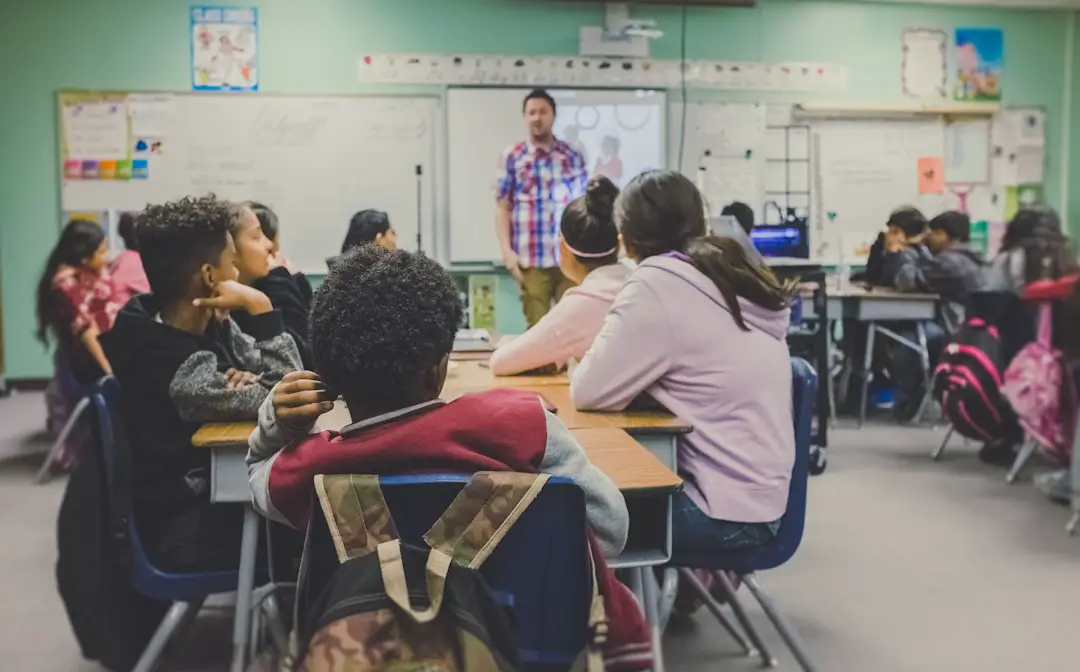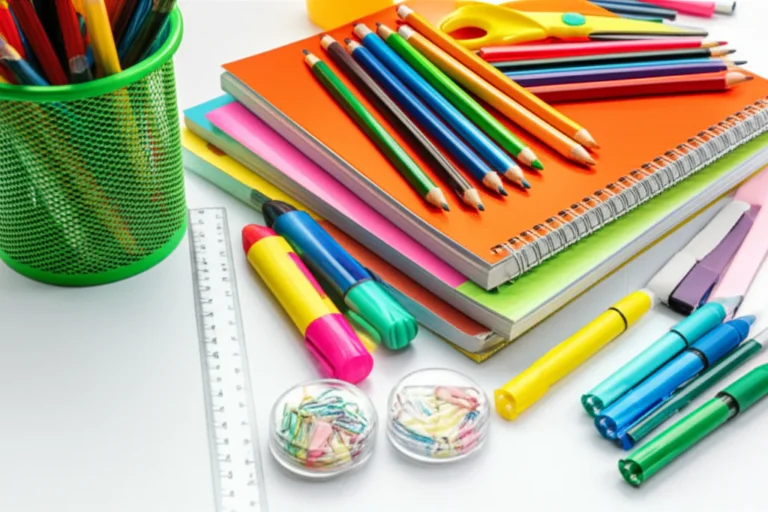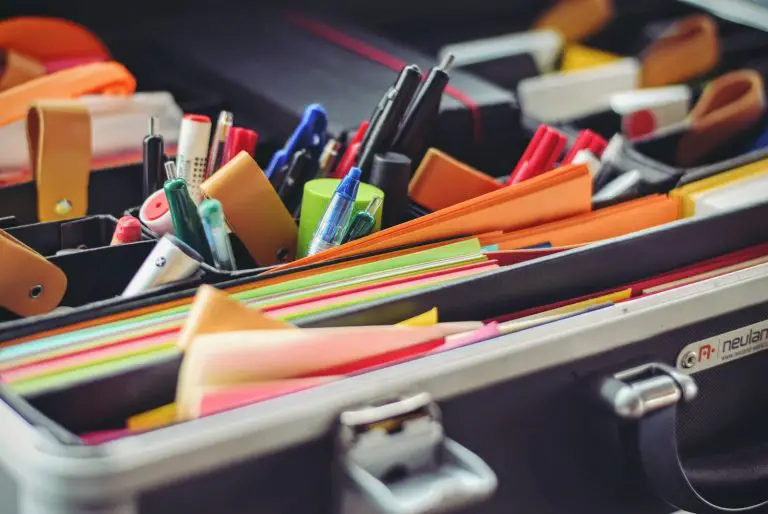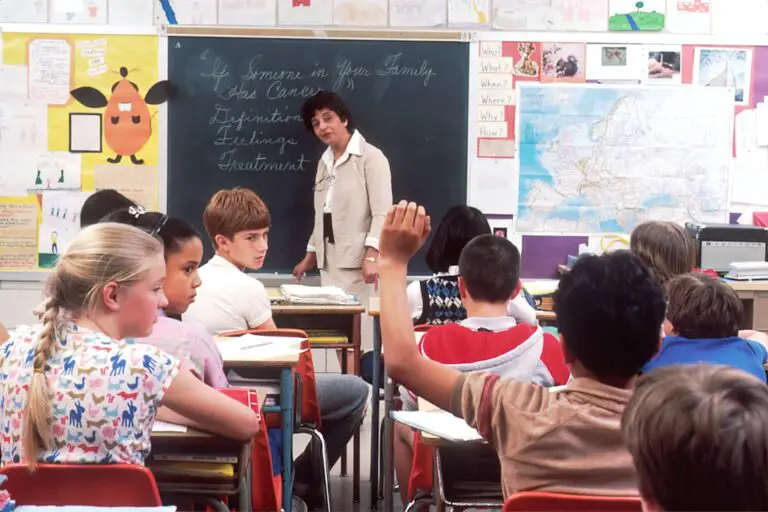Support our educational content for free when you purchase through links on our site. Learn more
What Percent of Teachers Buy Their Own Supplies? Shocking Stats (2025) ✏️

Imagine walking into a classroom where the teacher has spent hundreds—sometimes thousands—of dollars from their own pocket just to make sure every student has pencils, paper, and even snacks. Sounds unbelievable, right? Yet, over 90% of teachers nationwide are quietly footing the bill for essential classroom supplies. In this eye-opening article, we dive deep into the latest data, uncover where the money goes, and explore the emotional and financial toll on educators. Plus, we share smart tips and trusted resources to help teachers and supporters stretch every dollar.
Curious about how widespread this issue really is? Or wondering how you can help ease the burden? Stick around—we’ve got all the facts, stories, and solutions you need.
Key Takeaways
- 94% of teachers buy their own classroom supplies, spending an average of $750-$1,000 annually.
- Out-of-pocket spending includes basics like paper and pencils, plus tech, books, and even snacks for students.
- Rising inflation and stagnant school funding are making this financial strain worse every year.
- Support from schools and communities exists but often falls short of teachers’ real needs.
- Teachers can save money by using grants, crowdfunding, and shopping smart at trusted stores like Teacher Supply Store™.
👉 Shop smart and save on essential supplies:
Table of Contents
- ⚡️ Quick Tips and Facts About Teachers Buying Their Own Supplies
- 📚 The History and Background of Teacher Out-of-Pocket Spending
- 🔍 What Percent of Teachers Buy Their Own Supplies? The Latest Stats & Surveys
- 💸 Where Does the Money Go? Breakdown of Teacher Supply Purchases
- 😰 A Tough Time for Out-of-Pocket Spending: Challenges Teachers Face
- 🛒 Sources of Support: How Schools, Districts, and Communities Help (or Don’t)
- 🧾 Key Takeaways: What Every Educator and Parent Should Know
- 💡 How to Save Money: Smart Shopping Tips for Teacher Supplies
- 📈 Trends and Predictions: The Future of Teacher Supply Funding
- 🤝 Community and Crowdfunding: Creative Ways Teachers Fund Their Classrooms
- 🛍️ Best Brands and Stores for Teacher Supplies: Where to Buy Quality on a Budget
- 🎒 What Teachers Wish You Knew About Buying Their Own Supplies
- 🔗 Recommended Links for Teacher Supply Resources and Discounts
- ❓ FAQ: Answering Your Burning Questions About Teacher Supply Spending
- 📚 Reference Links: Trusted Sources and Studies on Teacher Supply Purchases
- 🏁 Conclusion: The Real Cost and What We Can Do About It
⚡️ Quick Tips and Facts About Teachers Buying Their Own Supplies
It’s a common misconception that teachers are required to buy their own supplies. While it’s true that many teachers do spend their own money on classroom materials, it’s not a legal obligation. However, the reality is that many teachers feel pressured to supplement their school’s budget to ensure their students have the resources they need to learn.
🤯 The Shocking Truth: How Much Do Teachers Spend?
- The average teacher spends $750-$1,000 per year on classroom supplies. 🤯 That’s a significant chunk of change!
- Some teachers spend even more, upwards of $2,000 or more per year. 😲 This can be especially true for teachers in high-needs schools or those who teach subjects like art or science, which often require specialized materials.
- Teachers are spending more than ever before. 📈 According to a 2023 study by AdoptAClassroom.org, teacher spending on supplies has increased by 44% since 2015. This is likely due to a combination of factors, including inflation, increased student needs, and a lack of adequate school funding.
- Teachers are often forced to choose between buying supplies for their students and paying for their own basic needs. 💔 This is a heartbreaking reality for many teachers, who are already struggling to make ends meet.
💰 Where Does the Money Go?
Teachers spend their money on a wide range of supplies, including:
- Basic supplies: Paper, pencils, notebooks, crayons, markers, glue, etc.
- Technology: Laptops, tablets, projectors, interactive whiteboards, etc.
- Books and learning materials: Textbooks, novels, workbooks, manipulatives, etc.
- Classroom decorations: Posters, bulletin boards, rugs, etc.
- Snacks and rewards: For students who are hungry or need a little extra motivation.
- Cleaning supplies: Hand sanitizer, tissues, disinfectant wipes, etc.
👉 CHECK PRICE on:
- Paper: Amazon | Walmart | Office Depot
- Pencils: Amazon | Walmart | Office Depot
- Notebooks: Amazon | Walmart | Office Depot
- Crayons: Amazon | Walmart | Crayola Official Website
- Markers: Amazon | Walmart | Sharpie Official Website
- Glue: Amazon | Walmart | Elmer’s Official Website
📚 The History and Background of Teacher Out-of-Pocket Spending
The issue of teacher out-of-pocket spending is not new. For decades, teachers have been supplementing their school’s budgets to provide their students with the resources they need. However, the problem has become more acute in recent years, as school funding has stagnated or even declined in many areas.
This is a complex issue with no easy answers. There are many factors that contribute to teacher out-of-pocket spending, including:
- Declining school funding: Many schools are struggling to keep up with rising costs, leaving teachers with fewer resources to work with.
- Increased student needs: Many students come to school with a variety of needs, including poverty, homelessness, and hunger. Teachers often feel compelled to provide for these needs, even if it means spending their own money.
- The “unstated expectation” that teachers will spend their own money: Many teachers feel pressure from administrators, parents, and even their own colleagues to spend their own money on supplies.
It’s important to remember that teachers are not the only ones who are affected by this issue. Students are also impacted, as they may not have access to the same resources as their peers who attend schools with more funding.
Learn more about the impact of this issue on students: How Many Students Can’t Afford School Supplies? 7 Shocking Facts (2025) 🎒
🔍 What Percent of Teachers Buy Their Own Supplies? The Latest Stats & Surveys
The vast majority of teachers spend their own money on classroom supplies. According to a 2023 survey by the National Education Association (NEA), 94% of teachers report spending their own money on classroom supplies. This number has remained relatively consistent over the past few years, indicating that the problem is not going away.
📊 Survey Results: A Closer Look
Here are some key findings from recent surveys on teacher out-of-pocket spending:
| Survey | Year | Percentage of Teachers Spending Own Money | Average Spending |
|---|---|---|---|
| NEA | 2023 | 94% | $750-$1,000 |
| AdoptAClassroom.org | 2023 | 93% | $860 |
| U.S. Department of Education | 2022 | 94% | $500-$750 |
These numbers paint a clear picture: Teacher out-of-pocket spending is a widespread problem that affects teachers across the country.
📈 Trends and Predictions: The Future of Teacher Supply Funding
The future of teacher supply funding is uncertain. However, there are some trends that suggest that the problem may worsen in the coming years.
- Inflation: The cost of school supplies is rising, putting more pressure on teachers’ budgets.
- Declining school funding: Many schools are facing budget cuts, which could lead to further reductions in classroom supplies.
- Increased student needs: The number of students in need is growing, putting more pressure on teachers to provide for their basic needs.
It’s clear that something needs to change. Teachers cannot continue to be expected to shoulder the financial burden of providing for their students.
💸 Where Does the Money Go? Breakdown of Teacher Supply Purchases
Teachers spend their money on a wide range of supplies, but some categories are more common than others. Here’s a breakdown of the most common teacher supply purchases:
📚 Books and Learning Materials
- Textbooks: While many schools provide textbooks, teachers often need to purchase additional books for their students, such as novels, workbooks, and supplemental materials.
- Manipulatives: These are hands-on learning tools that help students to understand concepts. Examples include blocks, counters, puzzles, and games.
- Classroom libraries: Many teachers create their own classroom libraries to provide students with access to a wide range of reading materials.
🖍️ Basic Supplies
- Paper: Teachers use a lot of paper for assignments, projects, and handouts.
- Pencils and pens: These are essential for writing, drawing, and taking notes.
- Notebooks and binders: Students need notebooks and binders to organize their work.
- Crayons, markers, and colored pencils: These are used for art projects, coloring, and highlighting.
- Glue, tape, and scissors: These are essential for crafts, projects, and other classroom activities.
💻 Technology
- Laptops and tablets: Many teachers use laptops and tablets for lesson planning, grading, and communication with students and parents.
- Projectors and interactive whiteboards: These tools help teachers to present information and engage students in interactive learning activities.
- Software subscriptions: Many teachers use software subscriptions for online learning, assessment, and communication.
🪑 Furniture
- Desks and chairs: Teachers often need to purchase additional desks and chairs for their students, especially if they have a large class or if their school’s furniture is outdated.
- Storage bins and shelves: Teachers need storage bins and shelves to organize classroom materials and supplies.
🧼 Cleaning Supplies
- Hand sanitizer: Teachers need hand sanitizer to help prevent the spread of germs.
- Tissues: Teachers use tissues for students who are sick or have allergies.
- Disinfectant wipes: Teachers use disinfectant wipes to clean surfaces and keep their classrooms germ-free.
🍪 Snacks and Rewards
- Snacks: Teachers often provide snacks for students who are hungry, especially those who come from low-income families.
- Rewards: Teachers use rewards to motivate students and encourage good behavior. Examples include stickers, pencils, and small toys.
😰 A Tough Time for Out-of-Pocket Spending: Challenges Teachers Face
Teachers face a number of challenges when it comes to out-of-pocket spending. These challenges can make it difficult for teachers to provide their students with the resources they need.
💸 Financial Strain
- Teachers are often paid less than other professionals with similar levels of education. This can make it difficult for teachers to afford to spend their own money on classroom supplies.
- Inflation: The cost of school supplies is rising, putting more pressure on teachers’ budgets.
- Lack of adequate school funding: Many schools are struggling to keep up with rising costs, leaving teachers with fewer resources to work with.
💔 Emotional Toll
- Teachers often feel pressured to spend their own money on supplies. This can be stressful and emotionally draining.
- Teachers may feel guilty if they cannot afford to provide their students with the resources they need. This can lead to feelings of inadequacy and frustration.
- Teachers may feel like they are constantly having to “make do” with less. This can lead to feelings of burnout and dissatisfaction with their jobs.
⚖️ Ethical Considerations
- Teachers may feel like they are being asked to do more with less. This can lead to feelings of resentment and a sense of unfairness.
- Teachers may feel like they are being taken advantage of. This can lead to a loss of morale and a decrease in job satisfaction.
🛒 Sources of Support: How Schools, Districts, and Communities Help (or Don’t)
While many teachers face financial strain, there are some sources of support that can help them to offset the cost of classroom supplies. However, these sources of support are often limited and may not be enough to meet the needs of all teachers.
🏫 School and District Support
- School supply budgets: Many schools provide a small budget for classroom supplies. However, these budgets are often insufficient to meet the needs of all teachers.
- Grants and donations: Some schools and districts offer grants and donations to teachers who need additional funding for classroom supplies.
- Teacher supply stores: Some school districts have partnerships with teacher supply stores that offer discounts to teachers.
🤝 Community Support
- Parent-teacher organizations (PTOs): PTOs often raise money to support teachers and students.
- Community organizations: Some community organizations offer grants and donations to teachers.
- Crowdfunding: Teachers can use crowdfunding platforms to raise money from friends, family, and the community.
💔 The Gap in Support
Despite these sources of support, many teachers still struggle to afford the supplies they need. This is because:
- School supply budgets are often insufficient. Many teachers report that their school supply budgets are not enough to cover the basic needs of their students.
- Grants and donations are often competitive and difficult to obtain. Many teachers are not successful in obtaining grants and donations.
- Community support can be limited. Not all schools have active PTOs or community organizations that are willing to support teachers.
It’s clear that more needs to be done to support teachers who are struggling to afford classroom supplies.
🏁 Conclusion: The Real Cost and What We Can Do About It
Wow, what a journey! We’ve peeled back the curtain on a reality many of us might have only guessed at: over 90% of teachers are spending their own hard-earned money on classroom supplies—sometimes hundreds, even thousands of dollars each year. From basic pencils and paper to tech gadgets and snacks, teachers are going above and beyond to create a nurturing, resource-rich environment for their students.
But here’s the kicker: this isn’t just about generosity—it’s about necessity. School budgets often fall short, and inflation keeps pushing prices higher. Many teachers feel like they’re caught in a never-ending balancing act, trying to stretch limited funds while ensuring no student gets left behind. It’s a tough spot, emotionally and financially.
We’ve also seen that while some districts and communities offer support, it’s often not enough to close the gap. Crowdfunding, grants, and PTA donations help, but they’re band-aids on a much bigger wound.
So, what can you do? Whether you’re a parent, administrator, or fellow educator, awareness is the first step. Supporting teachers through donations, advocating for better school funding, or simply understanding the hidden costs teachers bear can make a world of difference.
At Teacher Supply Store™, we’re committed to helping teachers find quality supplies at affordable prices and sharing smart shopping tips to stretch every dollar. Because every student deserves a classroom where they can thrive—and every teacher deserves support, not stress.
🔗 Recommended Links for Teacher Supply Resources and Discounts
Ready to stock up your classroom without breaking the bank? Here are some top picks and trusted brands that teachers love:
-
Paper, Pencils & Notebooks:
-
Art Supplies:
-
Classroom Organization & Furniture:
-
Books & Learning Materials:
-
Recommended Books for Teachers:
- The Teacher’s Guide to Classroom Supplies by Lisa M. Johnson — Amazon Link
- Budget-Friendly Classroom Hacks by Sarah K. Lee — Amazon Link
❓ FAQ: Answering Your Burning Questions About Teacher Supply Spending
What is the average cost of school supplies for teachers out of pocket?
Teachers typically spend between $750 and $1,000 annually on classroom supplies, according to the National Education Association and AdoptAClassroom.org surveys. This amount varies widely depending on factors like school funding, grade level, and subject taught. For example, art and science teachers often spend more due to specialized materials. Inflation and increased student needs have pushed these costs higher in recent years.
Read more about “Do Teachers Really Get Reimbursed for Supplies? 7 Insider Facts (2025) ✏️”
How many teachers have to buy their own classroom materials and decorations?
An overwhelming 94% of teachers report purchasing supplies with their own money. This includes everything from basic necessities like paper and pencils to classroom decorations that create a welcoming learning environment. The expectation to self-fund classroom needs is so widespread that it has become a norm rather than an exception.
Do teachers get reimbursed for buying their own school supplies and learning materials?
✅ Some teachers receive partial reimbursement or small classroom budgets from their schools or districts, but these funds are often insufficient.
❌ Many teachers receive no reimbursement and absorb the costs personally. The IRS allows teachers to deduct up to $300 annually on their taxes for qualified expenses, but this rarely covers the full amount spent. Additionally, reimbursement policies vary widely by district and are often limited or cumbersome to access.
What percentage of a teacher’s salary goes towards buying supplies for their students?
While exact percentages vary, studies suggest that teachers may spend up to 1-3% of their annual salary on classroom supplies. Given that the average teacher salary in the U.S. hovers around $60,000, this translates to hundreds or even thousands of dollars out of pocket. This financial burden is especially heavy considering many teachers earn less than comparable professionals and face rising living costs.
How can teachers reduce their out-of-pocket spending on supplies?
Teachers can leverage multiple strategies to ease the financial load:
- Utilize online platforms like DonorsChoose and AdoptAClassroom.org to request funding and supplies.
- Create Amazon Wish Lists to share with parents and community supporters.
- 👉 Shop smart with bulk purchases and discount retailers such as Dollar Tree, Target’s Dollar Spot, or Teacher Supply Store™.
- Collaborate with colleagues to share resources and supplies.
- Advocate for increased school funding and supply budgets through unions and parent groups.
Read more about “How Many Students Can’t Afford School Supplies? 7 Shocking Facts (2025) 🎒”
Are there tax benefits for teachers who buy their own supplies?
Yes! The IRS allows eligible educators to deduct up to $300 of unreimbursed expenses for classroom supplies on their federal tax returns. This deduction covers items like books, supplies, computer equipment, and professional development costs related to teaching. However, many teachers find this deduction only partially offsets their actual spending.
Read more about “How Much Do Teachers Spend on Supplies? The Shocking Truth! 📚”
📚 Reference Links: Trusted Sources and Studies on Teacher Supply Purchases
- National Education Association (NEA) — Why Are Educators Still Buying Their Own School Supplies?
- AdoptAClassroom.org — Do Teachers Need to Buy Their Own Supplies in 2023?
- U.S. Department of Education — Report on Teacher Out-of-Pocket Spending
- Crayola Official Website — Crayola Classroom Supplies
- Sharpie Official Website — Sharpie Markers
- Elmer’s Official Website — Elmer’s Glue Products
- IRS — Educator Expense Deduction
- Teacher Supply Store™ — Classroom Supplies | Office Supplies | Instructional Technology
We hope this deep dive has shed light on the real costs teachers face and inspired you to support the educators who shape our future. After all, a well-equipped classroom is the foundation of student success—and every teacher deserves to teach without financial stress. 🌟





